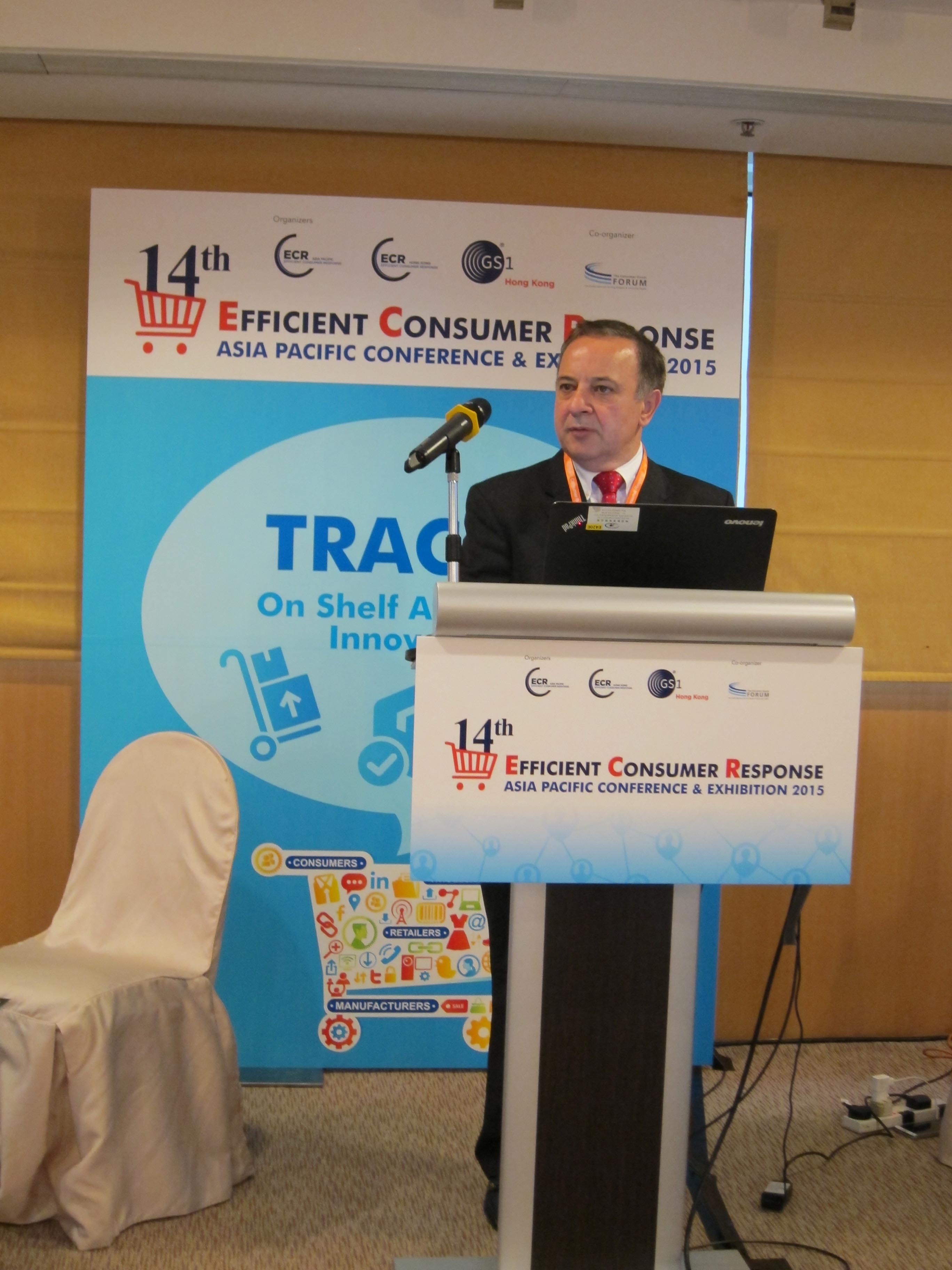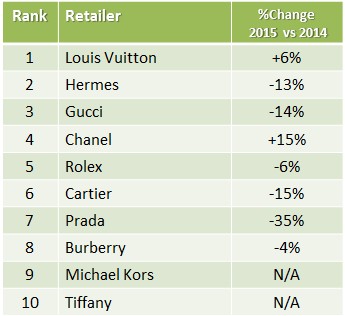In March, I had the pleasure to speak at the GS1 Hong Kong "14th Efficient Consumer Response Asia Pacific Conference & Exhibition". This post summarizes  some of my favorite musings on brick & mortar stores / online sales, Asia consumer trends, Internet of Things, and the Future of Retail.
some of my favorite musings on brick & mortar stores / online sales, Asia consumer trends, Internet of Things, and the Future of Retail.
Brick & Mortar Stores and Online Sales
Supermarket format growth will plateau by 2020 both in Europe and APAC. Most of APAC will skip the hypermarket wave, which is showing decline in early evolution. Hard discounters like Aldi and Lidl are adapting to convenience format and Asia yet to see a hard discounter. Etailing in Asia already ahead of evolved markets like Europe. -Damien Veilleroy, Metro Cash & Carry
APAC traditional trade (unorganized retail) is surviving the onslaught of modern trade by adapting their model. What stayed: close and personal consumer connections, credit services, home delivery, and in-depth knowledge of neighbor. And what's new: close-door set up, focus on hygiene, aisles, more premium products, use of technology, third party support, and aggressive marketing. - Damien Veilleroy, Metro Cash & Carry
China Online penetrates offline: E-commerce becoming mainstream - In 2014, "Single's Day" spend USD $9.3 billion in gross merchandise value; Mobile advertising and social media budgets - In 2015 spending on mobile ads is expected to increase 90% to $12 billion, surpassing UK and Japan; Penetration of Smartphones - Smartphone users in China are predicted to rise to over 700 million people by 2018. - Coca Cola
Asia Consumer Trends
Emerging Asia in 2020: 600 new and upgrading consumers with nearly $4 trillion in new money to spend: China - 300 million people ($2 trillion spend); India - 200 million people ($1 trillion spend); ASEAN countries - 100 million people ($0.8 trillion spend). - Accenture
The new Asia consumers are non-stop shoppers and winning their loyalty is challenging: 54% frustrated when offers are inconsistent across different channels; 81% could have been prevented from switching if the company had done something; 56% of switchers are driven away due to inefficient technology that compromise service experience. - Accenture
Six reasons why consumers visit the store: experiencing brands, convenience, entertainment / social interaction, finding a solution, buying more cheaply, and instant gratification. - Dr. Jacky Ting, PCCW Solutions
Population in Asia Pacific to reach 4.9 billion people by 2020 and account for 55% of the global population - Accenture
A sustainable future: 68% of consumers don't want to sacrifice price for green products; three-fourths don't want to sacrifice quality; 70% of consumers are looking for "easy ways to do something for the environment." We call this the Sustainable Mainstream - Rene T. Co, Procter & Gamble
90% of Asia's income pool is instantly accessible through mobile with nearly 50% reachable through more interactive communications. - Accenture
969,583,240 active social media users in 2014. China at 46% usage - Accenture
The luxury market to grow 5% in 2014 to $280 billion. The evolution of luxury: From what was to now: - Andre Chong, Diageo Reserve
Internet of Things
IoT Elements in Retail, How to leverage IoT to enhance customer shopping journeys: 1) POS data; 2) CRM, loyalty coupons; 3) HR system; 4) Brand, product, SKU, RFID; 5) No. of touch in signage; 6) channel, reseller, retailer, store, online; 7) Social Media; 8) Price elasticity, margin. - Dr. Jacky Ting, PCCW Solutions
The potential impact of the Internet of Things - An example of a Saturday morning at your house: Smart home has made fresh coffee and bread; ordered and paid for groceries based on stock; Smart TV provides a summary of personal health and finance; Bank provides real time snapshot of his finance, based on data from the smart home; Alert from the bank shows discounts and reward points he can use; Open an app and buy new shoes. - Lara Truelove, Visa
Future of Retail
Bubble of Retail Opportunities: $1.5 trillion mobile & digital influence on in-store purchases in 2014, up from $334 billion in 2012 (Deloitte Digital); $5,409 million RFID retail market by 2020, up from $542 million in 2013 (Frost & Sullivan); $5.8 global wearables tech in 2018, up from $750 million in 2012 (Transparency Research); $129 billion global retail shrink or 1.29% of retail sales (Global Theft Barometer); $818 global inventory distortion - $456 billion from out-of-stocks (IHL Group) - Tony D'Onofrio, Tyco
The future of retail: Less store labor / improved customer experience; interactive retail stores with employees as brand ambassadors; item level intelligence driven by source tagging; a focus on "value" integration; a sustainable retail future. - Tony D'Onofrio, Tyco
My appreciation to the GS1 Hong Kong event organizers for the invitation to share the stage with the other insightful speakers and for the additional musings on the future of retail.
















